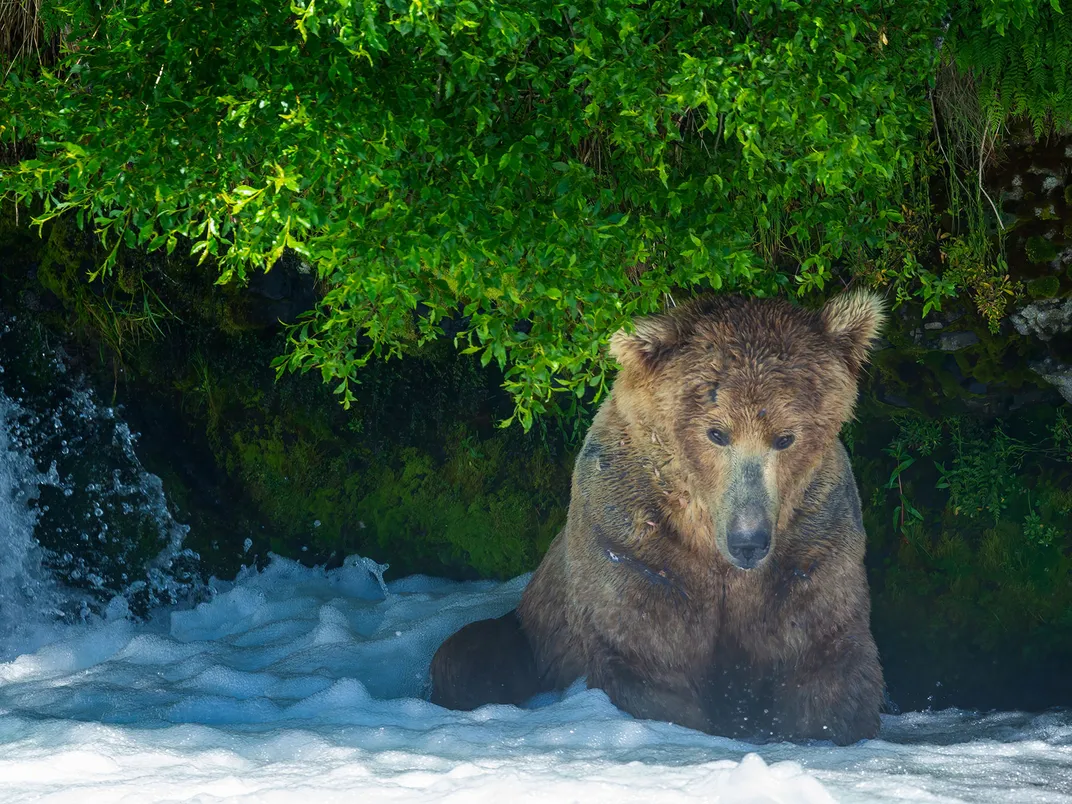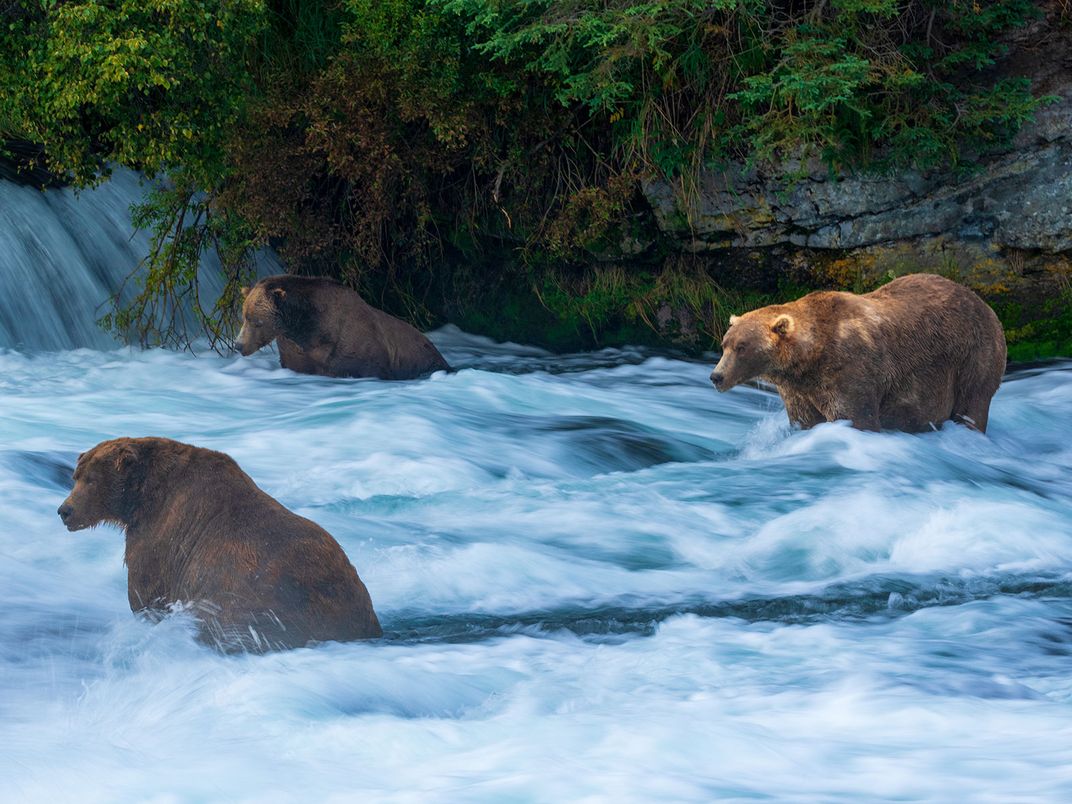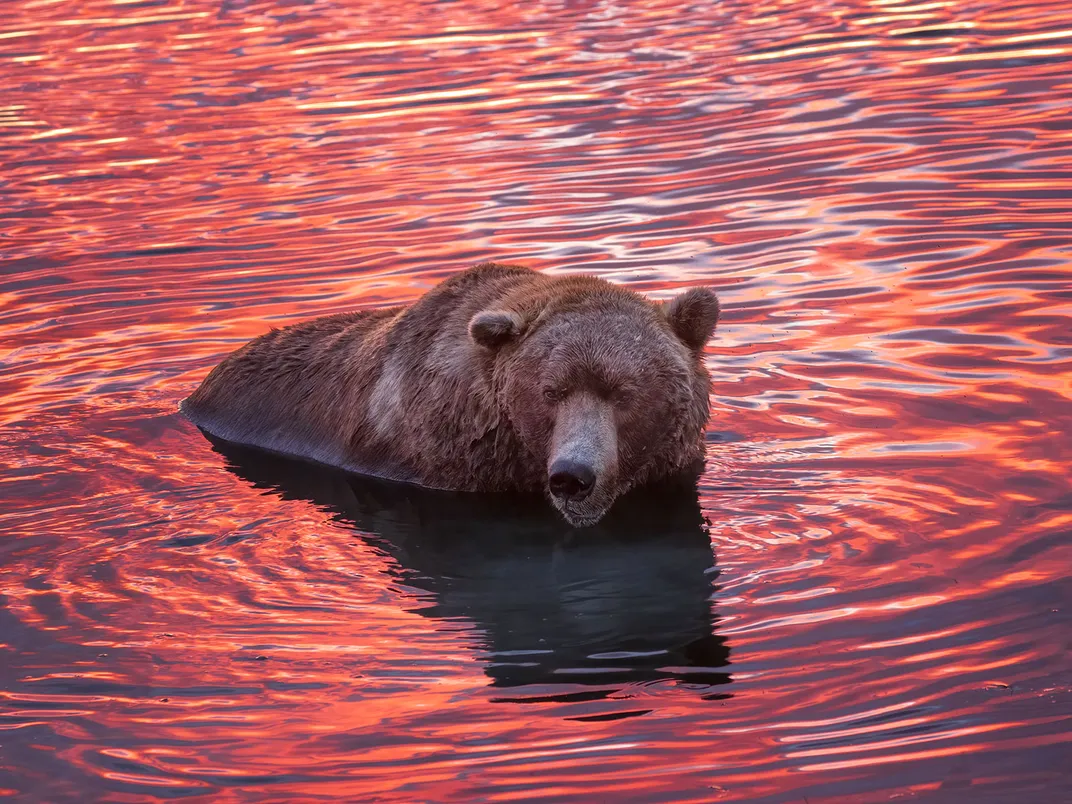
2024-10-04 02:30:04
Since 2012, millions of viewers have tuned in to Explore.org’s bear cams of Alaska’s Katmai National Park and Preserve, and many of them can tell you that bear 480 Otis is a legend.
Otis has become the face of Fat Bear Week, an annual online bracket-style competition that celebrates the heft of the brown bears at Katmai’s Brooks Falls. At that waterfall, bears gorge on salmon to pack on the pounds in order to prepare for hibernation. This year will mark the tenth anniversary of the competition, which launched October 2. But the four-time Fat Bear Week champion, who is more beloved for his personality than his size, is missing.
Known as the “Zen master,” Otis practices patience and avoids conflict. As larger and younger bears battle it out for salmon in the “jacuzzi,” a competitive plunge pool directly beneath Brooks Falls, Otis sits in a shallow pool set apart from the action, waiting for the salmon to swim directly to him. In the remote southwestern Alaska wilderness, where human visitors hardly register as a significant factor of the landscape, Otis embodies the spirit of the park’s peacefulness, says novelist and ghostwriter Angel Canann.
“He’s kind of the grandfather of the place, really,” says Canann, who became involved with the bear cam community after a trip to the park in 2021. “All of the different factors about Katmai that make it the special, extraordinary, unusual and singularly amazing place that it is—he encompasses that in himself, and that’s one of the reasons everybody loves him so much.”
Otis has been reliably showing up to the falls since 2001, when he was first identified as a 4-to-6-year-old sub-adult. Each year around July, bear cam viewers anxiously anticipate his return, knowing the beloved elder bear is approaching the limit of his 20- to 30-year lifespan. Fans always breathe a big sigh of relief when Otis shows up to his preferred spot in the pool, which viewers have dubbed his “office,” says Stacey Schmeidel, a college public relations professional who has volunteered both in-person as a visitor interpreter at Katmai National Park and Preserve and online operating Explore.org’s nature cameras.
“When he does show up, a lot of people will say, ‘Otis is in the office, and all is right with the world,’” says Schmeidel.
480 Otis practices his signature “Zen” fishing technique, at a pool his fans call his “office,” on July 2, 2018. Ed MacKerrow / In Light of Nature
But Otis didn’t show up to the falls this summer, and rangers can’t account for his whereabouts. Bears in Katmai aren’t tracked by any method other than observation, and the nature cameras at Brooks Falls cover only about a mile and a half of the vast, 4.2-million-acre park, says Sarah Bruce, Katmai National Park and Preserve’s visual information specialist. As Fat Bear Week gets underway, fans are wondering what may have happened to the beloved bear.
“It’s interesting how, I guess you could say, attached or emotional I’ve gotten over the years with him,” says Ed MacKerrow, a scientist and nature photographer who has been visiting Katmai since 2014. “I was up there in Katmai this August, and I was like, ‘Oh man, I really hope I see him, I really hope he’s OK.’ And I didn’t see him, so that was sad.”
Since Otis is an older bear and his absence is unusual, he may be deceased, says Mike Fitz, the resident naturalist for Explore.org and a former Katmai National Park and Preserve ranger who launched Fat Bear Week. Or Otis may have adapted to a different fishing spot elsewhere in the park. Fitz has seen bears that take a break from the falls for a season and return in following years. But they were all younger than Otis, he says. While cautioning he doesn’t know where Otis is, he says his instinct tells him Otis likely isn’t elsewhere in the park.
“The longer we go without seeing him, I think the less likely [it is that] we’re going to see him next year,” says Fitz, who wrote the book The Bears of Brooks Falls.
This year’s Fat Bear Week will likely be the first without Otis as a contender since its inauguration as “Fat Bear Tuesday” on Katmai National Park and Preserve’s Facebook page in 2014—which Otis won. Fitz got the idea for the contest when he noticed viewers of the bear cams, launched in 2012, had posted side-by-side images comparing the same bear. One showed a skinny version of the bear after emerging from hibernation, and the other image showed a fatter bear that was bigger thanks to feasting on salmon. Adult males usually weigh between 600 and 900 pounds in mid-summer, but they can chunk up to more than 1,000 pounds by fall. In the initial contest, the bear with the most likes and positive reactions on Facebook won.
Fat Bear Tuesday later expanded into Fat Bear Week, a series of head-to-head, March Madness-style matchups in which voters weigh in on which bear has fattened up the most—although organizers admit, the competition is more of a personality contest
480 Otis, right, hunts for salmon in his preferred fishing spot known as his “office” near Brooks Falls in Alaska’s Katmai National Park and Preserve in August 2022. Otis and other Katmai bears like 747, foreground, and 801, background, have become famous thanks to Explore.org’s nature cameras. Ed MacKerrow / In Light of Nature
The tournament celebrates fat as a sign of success for the bears, which must consume a year’s worth of food in six months in order to survive the loss of about a third of their bodyweight during hibernation. The week is a testament to the richness of the park’s ecosystem, which allows the bears to thrive. Katmai is home to a massive sockeye salmon run, and Brooks Falls provides a natural barrier to the fish migrating up Brooks River. The resulting salmon scramble amounts to a veritable bear buffet.
During the 2023 season at the falls, according to Fitz, roughly 16 million viewers watched Explore.org’s bear cams. Otis is often the first bear who new bear cam viewers learn to distinguish from the rest, Fitz says. With his light brown fur and floppy right ear, some viewers say he resembles a well-loved teddy bear.
“What you learn if you watch the bear cams is that all of those bears are individual animals,” says Schmeidel, who also hosts a “Fat Bear Book Club” and has helped explain the bears’ backgrounds to Katmai visitors. “They all have individual stories. And each bear has to overcome its own set of challenges every year to achieve peak fatness.”
Otis has managed to get fat in recent years despite challenges posed by his aging, like losing several of his teeth, Schmeidel says. His “Zen” fishing technique allows him to expend the least amount of energy, and his choice to move from the more competitive “jacuzzi”—where he fished as a more dominant bear in his younger years—to his “office” kept him safe from potential confrontations.
“He’s almost meditative, is the way I would describe it,” says MacKerrow. “He just minds his own business, and I think a lot of people resonate with that. He’s a good model for us.”
Otis’ absence seems to mark an inflection point in a year that’s full of change at Brooks Falls, Schmeidel says. Other familiar bears haven’t been seen at the falls this year—including 435 Holly, a popular mama bear who was crowned the 2019 Fat Bear Week champion, and 854 Divot, another mom who once persevered through a dangerous encounter with an illegal snare. And a new dominant male is rising among the ranks, 32 Chunk, who could be poised to be the next Fat Bear Week champion.
And tragedy has occurred at the falls this year as well, some involving Chunk. In July, a cub of last year’s champion, 128 Grazer, slipped over the falls and was washed into Chunk’s path. Chunk attacked the cub, which later died. And just before the 2024 Fat Bear Week bracket was set to be revealed on Monday, adult male bear 469 fatally attacked adult female bear 402, a beloved mother and multiple-time Fat Bear Week contestant. The attack and death in the waters of the Brooks River was seen on the bear cameras, shocking viewers.
Park officials postponed the bracket release by a day so they could discuss the incident on a livestream chat.
“This is what happens in the lives of wild bears,” Bruce said on the stream. “It’s amazing to have this unique opportunity to get a peek into the lives of these wild brown bears, and this is the reality of it. That doesn’t mean it’s an easy reality to accept.”
The absence of Otis and the other fat bear mainstays has been another difficult reality that fans have grappled with this year.
MacKerrow hopes to encounter Otis feasting on fish at one of the many other protected salmon rivers in the area. “If not, I hope that he passed on in a very peaceful way, maybe during hibernation,” he says. “I think that’s what we all hope for.”
480 Otis explores the lower Brooks River at sunset on September 4, 2022. Ed MacKerrow / In Light of Nature
Schmeidel understands that it’s still too early to determine what could have happened to Otis. She’s still talking about him in the present tense, but she is starting to think of his legacy at Brooks Falls. Through the Otis Fund, a fundraising campaign operated by the Katmai Conservancy that goes toward park conservation efforts, hundreds of thousands of dollars have been raised. And Otis may have sired many bears at the Brooks River, Bruce says, although scientists can’t say that for sure.
Others like to think of the iconic bear’s legacy in other ways, as Schmeidel does through sharing the bear’s stories.
She gets emotional when she talks about Otis, in part because his story as a bear helps us understand universal themes—like resilience, friendship, conservation, connectedness of humans and animals, and aging. “He is the king, and yet he is one of us,” reads a poem she wrote in his honor. “We are all 480 Otis.”
As with any loved one, it will be difficult to let Otis go, says Canann. She believes Otis will stay at Katmai, at the least in spirit.
“He was such a magnanimous presence, and he always will be,” Angel says. “But now there is an Otis-sized hole in Katmai that can never be filled.”
Fat Bear Week matchups are open for voting October 2 to 8 between 12 p.m. and 9 p.m. Eastern Time.






